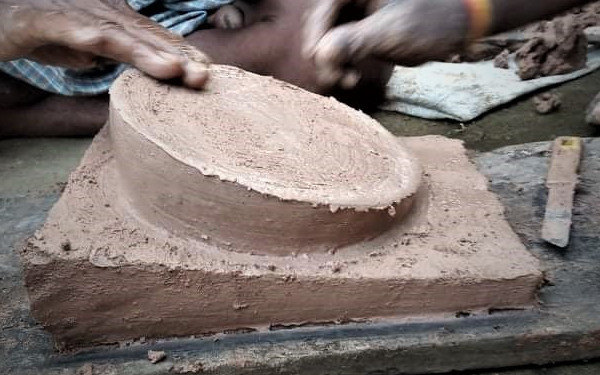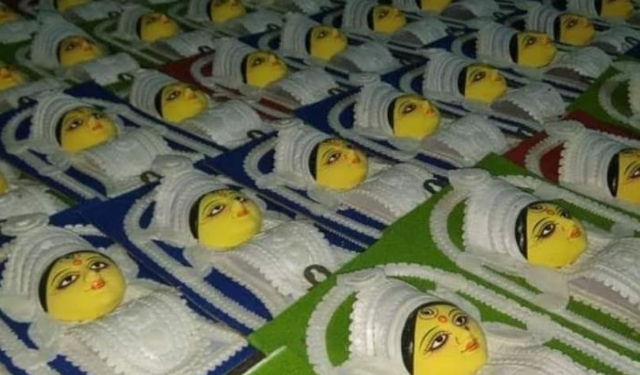The Context emphasize on the mass Production Process of Dhokra which is analyzed Simultaneously. The Purpose of the Study is to assess the Steps of Production System In today’s Craft Loving World.
Indigenous Resources For Crafting Dhokra
a) For Making the Form
b) For Firing
Supply Chain for Form Making:- Honeybee wax, Brass Scrap, Dhuno/Dhup, Mustard Oil, Sand, China Clay, Coal, Cow Dung, Wood, and Brick. These are Procurement from the Local Market of Gushkara.**
For Firing: China Clay Crucible, Coal, Cow Dung, Wood and Brick
The Procedure
Firstly the Clay Model is made & Dried.

Further, the wax threads are wound around the Clay Model.


Upon the wax Coating a Layer of Clay is applied.

Two holes are made and the model is dried.
The Moulds are Getting Sun Dried

After the model gets Dried up, again a layer of Sand with Clay Is applied.
This Model is Further Baked in Furnace
Then the Molten metal (Brass) Is Poured through a Channel.
After Molten Metal gets Hardened inside, it is dipped in water.

The outer Layer of Burnt Clay Mould Is Removed.
Lastly, the Metal Article is Polished and Sold.

A clay mixture of mud, cow dung and water of appropriate ratio is kneaded thoroughly for the required consistency. Using this mixture of clay a core model is made. Upon this model a pure form of clay is applied as a layer for the smooth finishing. This model is allowed to dry completely. By using lengthy wax threads the whole clay model is completely wrapped with it to form a layer and to obtain the selected pattern of design. On this coating of wax layer, a layer of clay with sand is applied. Usually sand is used here for the purpose of tightness in the mixture. Two channels like holes are made on it and allowed to dry. In these two channels, one channel is made to pour the molten metal hence the other channel is automatically used for releasing the air out.
After the clay model is completely dried, a layer of sand mixed with minimal amount of clay is applied. Thus the clay-wax model is totally set ready to bake. The model is thoroughly baked in furnace and the wax in-between the layers of clay gets melted and remains as a hallow space between the layers of clay. Further this model is taken out from the furnace and through a channel molten metal is poured into it. This molten metal is initially obtained by melting the metal crucibles in a graphite container. While heating/melting these metal crucibles a bit of salt is added to obtain the pure form of molten metal which also enhances the further process.
The molten metal poured into the clay mold acquires the shape and pattern of the model and acquires the impression of the wax model in fine details. This metal further gets hardened between the layers of upper and inner surfaces of the clay mould. Thus it is dipped in water to cool down the temperature of the metal. Once it is cooled completely then by slightly hammering and brushing the burnt mold, the metal artifact is thoroughly cleaned from both inside and outside. It is further polished all around and sold in market.

Durga Idol


 Changes come in doll making process with time duration
Changes come in doll making process with time duration